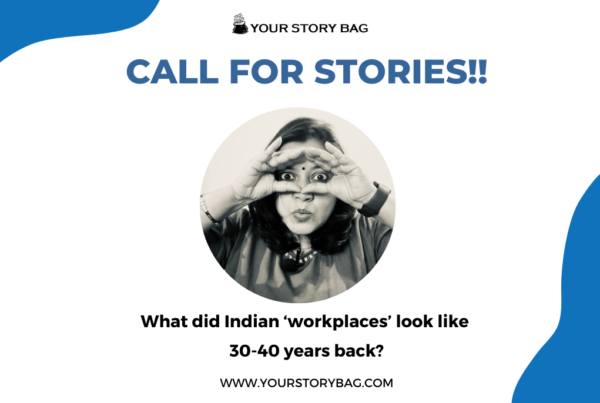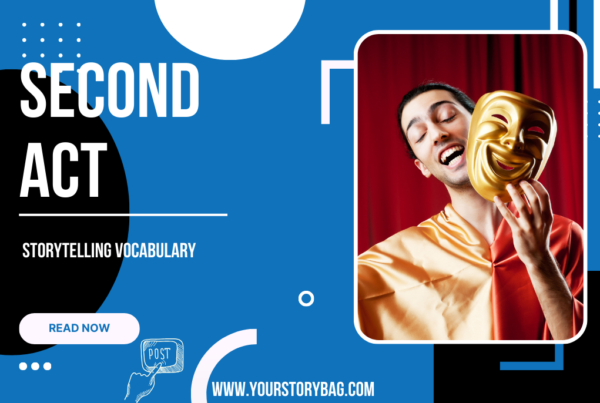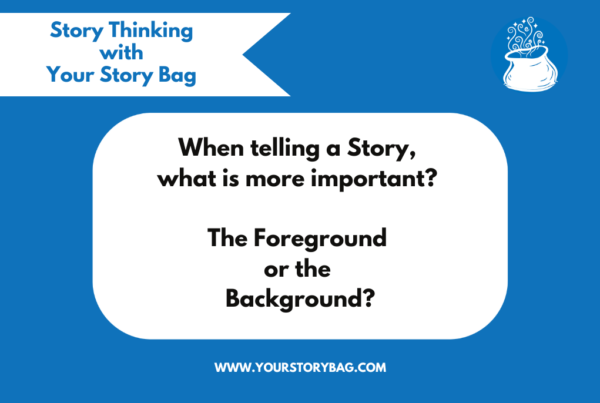June 2019 – In the sweltering heat of a Parisian summer, a bunch of us decided to climb the Eiffel Tower. After all, you cannot travel to Paris and NOT visit the Eiffel Tower. Right? That was our plan. Except that we took it notches higher. We decided to CLIMB the Eiffel Tower on foot. All the steps upto level 2…nearly 700 steps of steel. You needed nerves of steel to climb those steps. Quite literally. Back in the day I wasn’t as FIT or strong enough to climb the steps. I had a fall a few days earlier and my left shoulder was in immense pain. The thought of climbing the steps was daunting. Yet we did! In my climbing, my partners included my husband, my 7 year old son and a bunch of enthusiastic friends who took up the challenge happily.
I survived the climb. I didn’t faint or surrender. I didn’t panic or ask for help. I climbed the Eiffel Tower and lived to tell a tell. It was an experience of a lifetime and I’d do it again.
When I climbed the Eiffel Tower, I didn’t know I would land up telling a story out of it. It became a life experience that blew my mind and I emerged experiencing emotions that I had never had before. Life experiences, planned and unplanned become incredible chapters of our life showing us parts of us that are usually dormant and hidden.
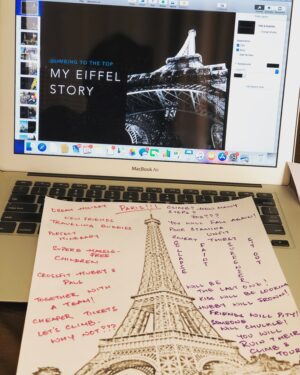 This month the ONE Storytelling Habit I’d recommend you is Experience Life through events BIG and SMALL.
This month the ONE Storytelling Habit I’d recommend you is Experience Life through events BIG and SMALL.
Here are a few handy tips to make Experience a priority:
Don’t Chase an Experience
We live in a culture that glorifies the highlight reel: exotic travel, life-changing events, bucket lists. From airport looks, to ‘gram perfect cafes, ‘must-have’ photographs before iconic bookstores, to jumping on to the latest viral trend. We confuse experience with everything that others are experiencing. Or at least wanting to experience. So that we can safely say, “been there, done that”. You think you are recreating a story, but it is not true. Chasing an experience that you see others have is perhaps not meant for you. You may not come out ‘experiencing’ the same emotions! Think climbing 700 steps of concrete in less than an hour! Does that sound exciting for you? What if the climb fails to inspire you?
The richest stories often don’t come from chasing big experiences—they come from being present to what’s unfolding around you.
Instead of constantly looking for the next big thing, pause. Let life happen. The conversation with a stranger, the awkward silence at dinner, the sound of rain hitting your window—these are real, raw, and layered.
Try this: Spend one day this week not seeking anything “special.” Just observe what unfolds naturally. At the end of the day, write down one thing that surprised or moved you.
Plan an Experience
Once in a while you can plan an experience. You must. Something to get you out of your comfort zone. To be in an unfamiliar territory. To get your hands into doing something out of the ordinary. To observe how you respond, feel and think. While not every experience needs planning, intentional experiences can become anchors for story-rich reflection. These don’t need to be expensive or dramatic. Think small, personal, and meaningful.
Concrete ideas:
- Attend a poetry reading or an open mic night (if you don’t have an interest in it)
- Take a different route to a destination (not the quickest, but the lengthiest maybe?)
- Visit a place in your city you’ve never been (take a bus, ask for directions, speak to locals to learn about their world)
- Spend an entire day without checking your phone (we MUST all do that!)
The point is to create conditions for something different to happen. You’re not manufacturing a story, you’re giving life a chance to surprise you.
Relive an Experience
I want to relive the experience of unplanned holidays. Just like my father did back in the 80’s-90’s. After Saturday breakfast he would ask us to pack. We’d leave our homes in an hour, not knowing where is our destination! Oh! The thrill of it!
Memory is a powerful storytelling tool. Often, we rush past experiences without giving them a chance to be relived again. Slow down. Revisit them.
Go back to the park where you had scraped your knee for the first time. Re-watch a movie that made you cry ten years ago. Listen to a song from your teenage years. But don’t just relive—reflect. How have you changed? What do you notice now that you didn’t then?
Prompt: What’s a memory that keeps resurfacing? What’s unfinished about it?
BIG Experiences
Occasionally, life has a way of coming up with BIG Experiences. These life-changing events—a breakup, a move, a death, a success—can feel too large to turn into stories. But they’re full of narrative power. The trick is not to tell the whole story, but to find one scene within it that carries emotional weight.
Concrete approach:
- Don’t tell the story of your big move. Tell the story of the moment you realized you had to begin again.
- Don’t tell the story of your new job. Tell the story of your first conversation with your new boss.
Zooming in makes the story more human, more specific, and more relatable. BIG Experiences come with many nano-stories hidden inside them.
SMALL Experiences
Not every story comes from a milestone. Many come from what we dismiss as mundane.
Examples:
- The joy of hearing your child mispronounce a word.
- A stranger who held the door just long enough.
- The exact moment you noticed the seasons changing.
- Overhearing a conversation during a commute
- Sitting at the bus stop and watching people come and go
I call these “Small Stories”.
Keep a “Small Stories” notebook. One line a day. Over time, this becomes a goldmine.
What to notice?
Great storytellers are keen observers. While experiencing something—especially something ordinary—tune in to the finer threads of the moment. What you notice becomes what you remember.
Here’s what to pay close attention to:
- Sensory Details: What do you see, hear, smell, taste, or touch? The scratch of a chair, the faint smell of soap, the sudden shift in light.
- Emotional Ripples: When did something make you flinch, pause, smile, or hold your breath? Your body reacts before your brain catches up.
- Unspoken Tension: Is something not being said? Is there an awkward silence or a change in energy? That voice in your head. In other words ‘what is at stake?’
- Shifts in Perspective: Did something you thought you knew suddenly look different? Did someone surprise you?
- Contrasts and Contradictions: A loud laugh in a quiet space. A child playing in a place of sorrow. These juxtapositions are story gold.
Stories live in the places where meaning, feeling, and detail intersect. Train your attention there.
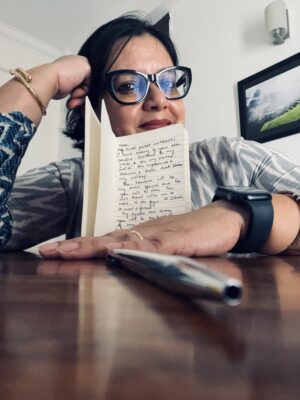 Craft a Story
Craft a Story
Not every experience becomes a story right away. But reflecting on it, shaping it, and giving it meaning—that’s the storyteller’s habit.
Simple story frame:
- Situation: What happened?
- Shift: What changed (in you or around you)?
- Significance: Why does it matter?
You don’t need to wait for an epic saga. Sometimes, the smallest shift leads to the deepest insight.
To become a better storyteller, become a better experiencer of life. Not in the dramatic, performative way—but in the attentive, open-hearted way that turns even the simplest moment into a source of connection.
So go on. Live. Feel. Notice. Then, tell us what it meant.
Go out there and experience life!
Now!
Build your Storytelling Habits is a year-long series where we share actionable steps to build ONE HABIT per month.
Subscribe to our Exclusive & Niche Newsletters
Or follow the series on our Blog
Here are the other Habits in the list:
Storytelling Habits | Story Journal

